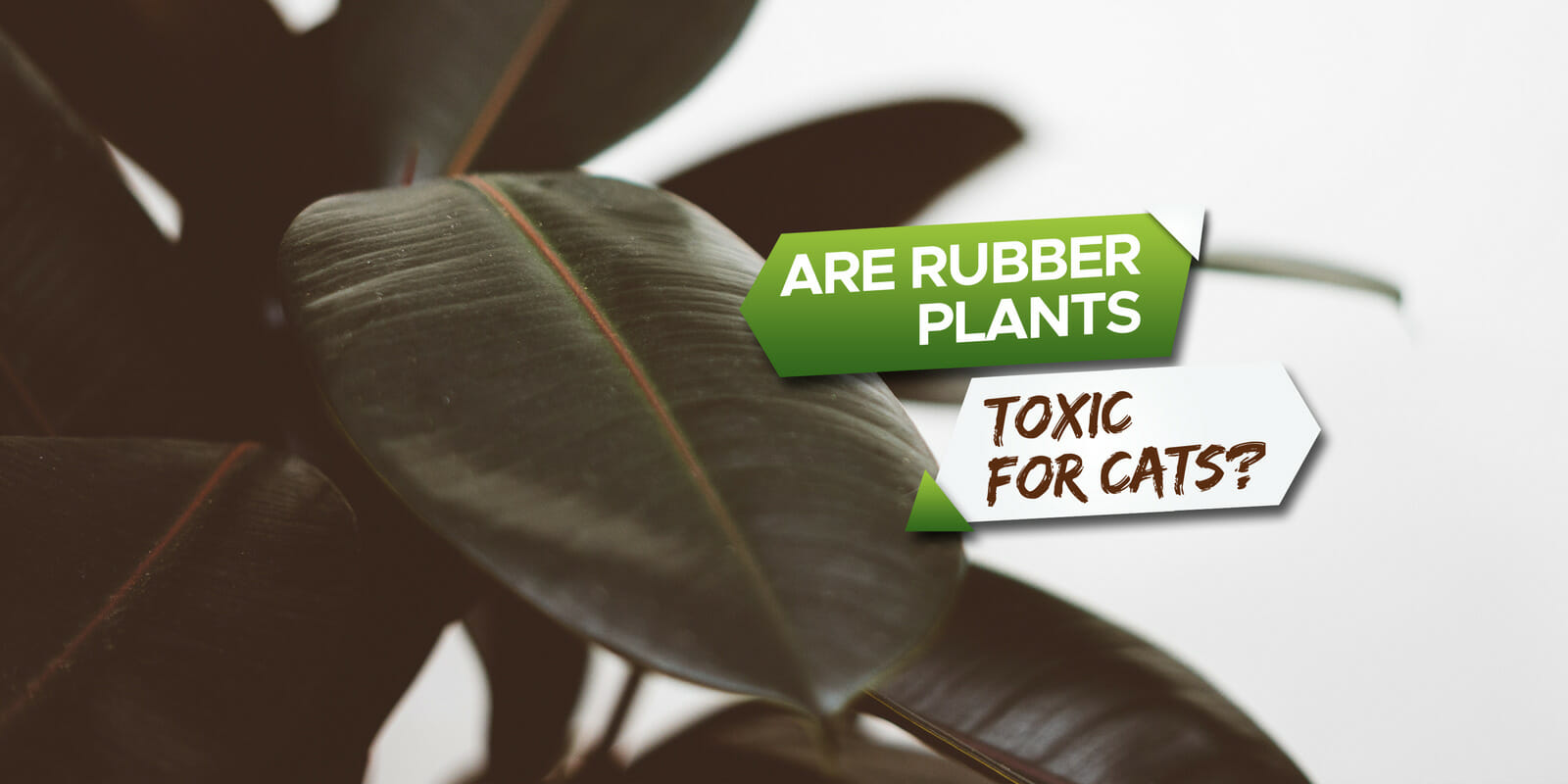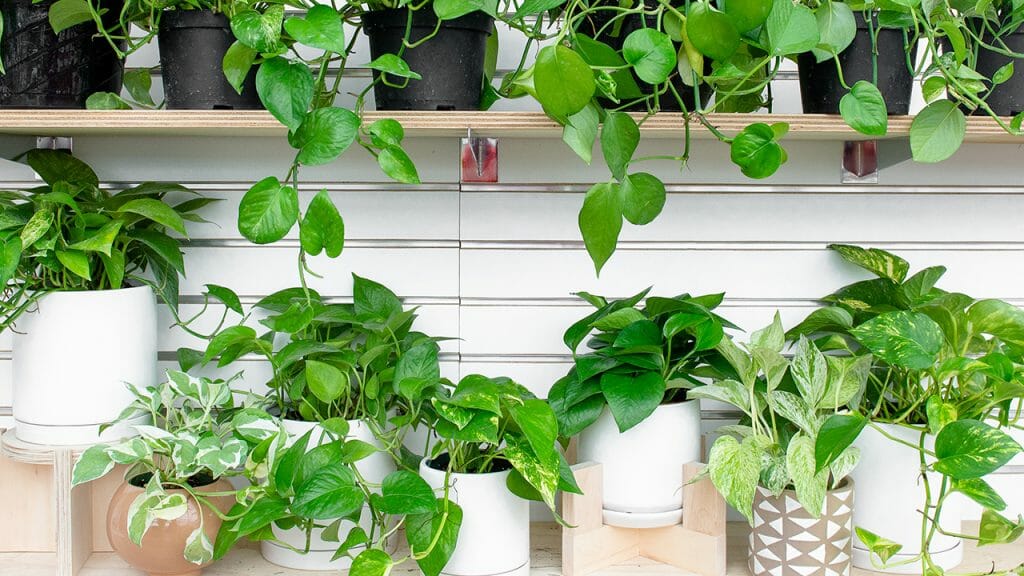Rubber plants are yet another house plant that has become incredibly trendy recently. Their height and dramatic shiny leaves make a striking statement in any room.
So, after seeing them all over social media, you may be tempted to add one of these beautiful ornamental plants to your collection. However, if you have pets, you first need to answer the question: are rubber plants toxic to cats?
Unfortunately, rubber plants are toxic to cats if they ingest the leaves, but the effects will only last a few hours.
This may be alarming, but don’t worry; rubber plant poisoning isn’t deadly to your cat. They are entirely safe on contact and only become a problem if the leaves for stems are consumed.
In this article, we’ll get to know the rubber plant a little bit better and learn about how it can be toxic to cats. Maybe we can even figure out a way for them to live harmoniously?
What are Rubber Plants?
Before we get into whether rubber plants are toxic to cats, we need to get to know them a little better.
Let’s take a look at a little overview of their needs before we get into it:
| Specifications | |
| Scientific Name | Ficus Elastica |
| Family | Moraceae |
| Light | Bright sunlight |
| Soil | Well-drained soil |
| Watering | Once a week |
Rubber plants are flowering trees that are native to the eastern parts of South and Southeast Asia but now they are found all over the world as houseplants. Due to their origins, they enjoy a humid and temperate climate.
They are rather stout plants with a sturdy trunk and broad, oval leaves with a beautifully shiny surface. The color of the leaves can range from deep green and burgundy to a mottled green patchwork.
Their beauty is one factor that has made these plants so popular as houseplants in the last few years. However, the fact that they are very easy to take care of also plays a role.
They are very hardy plants that can even tolerate a light frost if left outside. They only require once a week watering, and while they like humidity, they can also tolerate drought. This makes rubber plants an excellent choice for beginners or anyone with a busy schedule and not enough time to handle a high-maintenance plant.
Are Rubber Plants Toxic to Cats?
Rubber plants are mildly toxic to cats if they ingest the leaves.
When the leaves or stems are cut, the rubber plant will produce a milky white latex that gives the plant its name; this substance is toxic to cats.
Luckily, the effects are not fatal, and your cat should totally recover after a few hours.
Since rubber plants aren’t deadly to cats, you may be tempted to try having one of these stunning plants in your home. We recommend approaching with caution and paying attention to your cat’s demeanor.
Some cats will live with plants and have absolutely no interest in them; if thats what your furbaby is like, then, by all means, try out a rubber plant in your house. Just be sure to remove any leaves that may drop immediately.
On the other hand, if your cat likes to play in your plants, dig them up, or even worse, chew on them, rubber plants might not be the best choice for your home. Luckily there are a lot of beautiful houseplants that are completely safe for cats for you to choose from. When plant shopping, keep your cat in mind so you can make safe buying decisions.
The fact that rubber plants aren’t highly toxic allows you still to enjoy this stunning plant under the right circumstances.
How Can I Tell if My Cat Has Been Poisoned By A Rubber Plant?
Fortunately, rubber plants aren’t poisonous merely on contact. Your cat will have to ingest the leaves to be poisoned.
If your cat starts exhibiting any of the following symptoms, we suggest checking your rubber plant for any bite marks or missing leaves to confirm that it is the cause.
There are a few key symptoms to look for in rubber plant toxicity:
- Dermatitis
- Oral irritation
- Salivation
- Vomiting
- Diarrhea
- Dehydration
This may seem scary but don’t panic; the symptoms should pass within a few hours. You can help alleviate your cat’s discomfort by flushing the mouth and face with water.
Although it is not severe, you may want to take them to the vet to get them checked out if you are still concerned. The vet may also administer activated charcoal, which can help quickly minimize the toxicity symptoms.
Frequently Asked Questions:
Are there any types of rubber plants that aren’t toxic to cats?
If you love the look of rubber plants, but you have an inquisitive cat, we might have a solution for you!
Baby rubber plants are not actually the baby version of the regular rubber plant; they are a closely related cousin that is non-toxic to cats. They have the same oval, shiny leaves in a more compact form.
They are a wonderful plant that could be the perfect fit for a home with a cat who likes getting to know your plants.
What house plants are the most toxic plants for cats?
Unfortunately, there are so many different plants that are toxic to cats. Most of the time, this is due to the plants containing calcium oxalate, which is mildly toxic to cats.
The worst kinds of plants for cats are those that have flowers and pollen that can easily poison your pet on contact with disastrous results. However, some non-flowering plants are also highly toxic to cats. This is why it is so important to check before buying any new plants.
These are a few of the worst culprits:
- Peace lily
- Jade plants
- Pothos
- Sago palm
Conclusion
So, at the end of the day, unfortunately, rubber plants are mildly toxic to cats.
However, as we have explored, this doesn’t mean your cat and your rubber plants can’t live happily side by side. You can place the plant higher up where a curious cat can’t reach it or place it on the floor if you have completely disinterested cats. It’s all dependent on the personality of your furry friend.
We hope this little guide has given you some useful insight into rubber plants and tips on avoiding rubber plant toxicity in your beloved pets.




